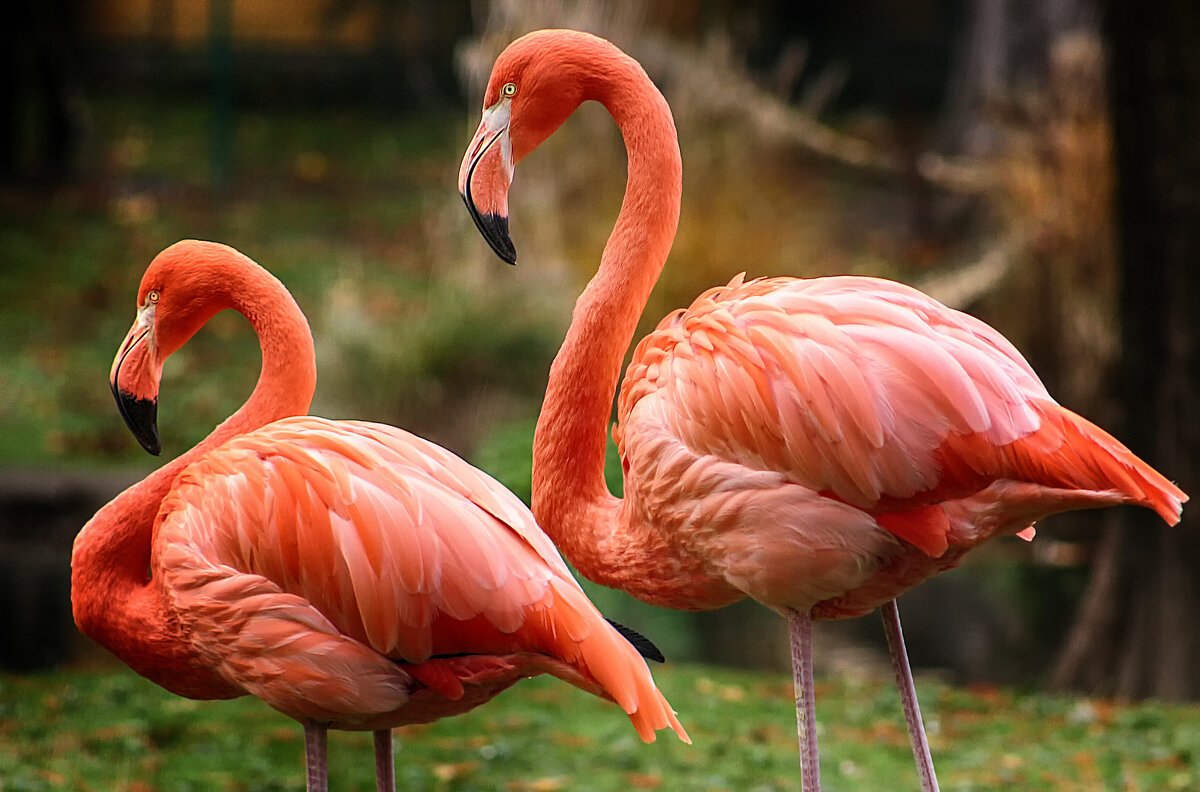Flamingos are one of the most recognizable and beloved birds in the world, known for their striking pink plumage, long legs, and distinctive curved bills. These social birds are often seen wading through shallow waters in large flocks, adding a splash of vibrant color to their aquatic habitats.
Flamingos belong to the family Phoenicopteridae, which consists of six species: the greater flamingo, lesser flamingo, Chilean flamingo, Andean flamingo, James’s flamingo, and the American flamingo. Each species exhibits slight variations in size, color, and habitat preferences, but all share the characteristic pink coloration derived from their diet. This pink hue comes from carotenoid pigments found in the algae, crustaceans, and plankton that flamingos consume. Without these pigments, flamingos would be white or pale grey.
One of the most fascinating aspects of flamingo behavior is their feeding technique. Using their uniquely shaped bills, flamingos filter-feed by inverting their heads and sweeping their bills side to side in the water. This action allows them to trap food items while expelling water and mud. The intricate structure of their bills and the presence of comb-like structures called lamellae make them highly efficient feeders.
Flamingos are also known for their remarkable social behaviors. They form large colonies, sometimes numbering in the thousands, which provide safety in numbers and enhance breeding success. Within these colonies, flamingos engage in synchronized displays and vocalizations that help strengthen pair bonds and coordinate group activities. During the breeding season, these displays become particularly elaborate, involving head-flagging, wing-saluting, and marching in unison.
Breeding for flamingos is a communal affair. They construct nests from mud, forming mounds that elevate their eggs above the water level. Both parents take turns incubating the single egg laid by the female, and once hatched, the chick is fed a nutrient-rich “crop milk” produced by both parents. This crop milk is vital for the chick’s early development and growth.

Flamingos inhabit a variety of environments, from saline or alkaline lakes and lagoons to estuaries and mangrove swamps. The adaptability of flamingos to different water conditions is one of the reasons for their wide distribution across the Americas, Africa, Europe, and Asia. However, their reliance on specific habitats makes them vulnerable to environmental changes and human activities such as pollution, habitat destruction, and climate change.
Conservation efforts are crucial to protecting flamingo populations and their habitats. Organizations around the world are working to monitor populations, preserve critical habitats, and raise awareness about the importance of these unique birds. Initiatives include creating protected areas, restoring wetlands, and conducting research to better understand flamingo ecology and behavior.

In addition to their ecological significance, flamingos hold cultural and symbolic value in many societies. They are often associated with beauty, grace, and elegance, and have inspired art, literature, and fashion. The iconic image of a flamingo standing on one leg has become a popular motif, representing balance and tranquility.
Flamingos also play a role in the tourism industry, attracting visitors to natural reserves and parks where they can be observed in their natural habitats. This not only provides economic benefits to local communities but also fosters a greater appreciation for wildlife and the need for conservation.
The vibrant life of flamingos is a testament to the wonders of nature. Their resilience, social complexity, and striking appearance make them a source of fascination and admiration. By protecting their habitats and promoting sustainable practices, we can ensure that future generations continue to marvel at these magnificent birds. In a world where environmental challenges are ever-present, flamingos remind us of the beauty and diversity of life that we must strive to preserve.






